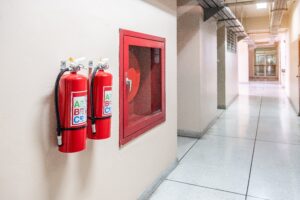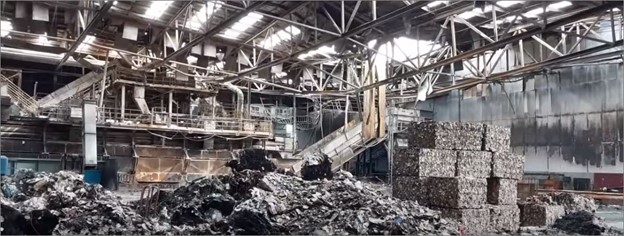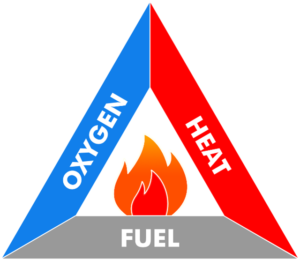
10 Tips for Fire Safety in Schools
This guide covers our Top 10 Tips for Fire Safety in Schools to ensure you haven’t missed off any of the really important, but easily overlooked facets of fire safety
Book your FREE, no-strings-attached Fire Safety Audit to ensure that you’re properly protected from the risk and comply with current fire safety legislation.
Get essential insights and updates
in fire safety – straight to your inbox!
The video can be viewed here – Fire at Altens East Mixed Recycling Facility – YouTube

What I found particularly painful to watch was the time taken for the fire to be detected — from the earliest signs of smoke to the point where flames first appear.
After some deliberation, i’ve decided to share my ‘take’ on the lessons that can be learned from a fire safety design perspective from this insightful footage.
Disclaimer — the following are simply my thoughts, assumptions and lessons learned from the footage. I trust they are of assistance to somebody considering fire safety designs for their recycling facility.
Whilst I have no way of knowing, I assume that the facility was protected with some form of Smoke Detection — either beam detection or, more probably, aspirating smoke detection. Certainly, from the angle that the CCTV footage is presented, the visible flames appear too small to have activated most “Flame Detectors” at the point when the fire alarm is activated.
This is no extraordinary phenomenon. Ceiling-mounted smoke detection has an inherent flaw — the smoke has to get there first.
Until the smoke has sufficient energy (heat) to rise to the ceiling, it will dissipate and float around at lower levels in the area. Sometimes it hits “thermal layers” of higher temperature in the ceiling void and can’t penetrate through these until it has more heat energy. This is called Stratification. All these factors can delay the effectiveness of your ceiling-mounted smoke detection.
At Altens, there was a window of over 25 minutes from the first signs of a fire and the fire alarm activating (16:07 – 16:35), which was an opportunity lost.
This is unlikely to be any reflection upon the design of the installed systems. It’s just an established limitation of the efficacy of ceiling-mounted smoke detection in a high-roofed building.
After that, it took a further 12 minutes for automatic fire suppression to commence (16:35-16:47). This was another opportunity lost, since the speed of fire spread after the first flames appear at 16:35 is clear for all to see.
Swift suppression intervention at this point could have resulted in a very different outcome.
It’s reasonable to assume that the sprinkler bulbs which operated would have been in the region of 68 degrees or 93 degrees Celsius. This supports the well-established position that sprinkler protection (whilst commendable) is often too reactive in a high-roofed building. A system which can be immediately operated and targeted by the fire detection system (i.e. water cannons) eliminates that delay.
Less than a minute later (16:48), the heat takes out the CCTV.
In all likelihood, the only way to have expedited detection of the fire would have been the use of Video Smoke Detection — simply, smoke analytics on CCTV cameras. This eliminates the requirement for smoke to find its way to the ceiling, so that the time delay is largely eliminated. Generally, smoke detection can only be used for early warning in recycling applications. However, with the Fire Rover system we incorporate smoke detection with any indoor application.
It’s impossible to accurately state just how early the incident could have been detected using thermal detection. I’d say, probably not as quickly as with video smoke detection. It would appear as though the fire didn’t start directly “on the surface”, as the smoke is percolating through layers of waste. As such, it’s highly probable that the layers of waste would insulate the heat, hiding the fire from a thermal camera until it broke through to the surface at 16:35.
Whilst reliable, robust and, when twinned with suitable suppression, often ideal for these applications, the obvious limitation is that your fire has to have reached the “flaming” stage to activate the detectors. This can create a significant opportunity lost — as seen in the Altens footage.
The roof sprinklers took too long to operate for them to prevent a catastrophic loss of the recycling plant. This leads us to consider alternative (or supplementary) forms of fire suppression.
There are two options for fast-acting suppression, which can be operated by a detection system:
Fire safety systems for recycling facilities have unique requirements. The fire engineering standards available (i.e. BSEN-12845 or NFPA 13 for sprinkler systems) are not necessarily suitable for the unique challenges of the recycling sector. These standards are generally suited to more typical hazard applications, such as manufacturing or warehouses.
Thus, the fire engineer considering a recycling application must also apply industry knowledge and pragmatism. The insurer for the risk also needs apply the same skills. A system that is simply ”compliant” may not achieve the desired outcomes.
At Blazequel, we specialize in fire protection for recycling facilities. If you have any questions or concerns, we’d be glad to discuss how we could help make your facility safer too. We cover all elements of fire engineering, from detection through to suppression for buildings, processes and storage areas.
We’re also the UK & Ireland agents for the Fire Rover system. This unique solution has thousands of recorded fire-saves at recycling facilities. It combines Video Smoke Detection, Thermal Fire Detection and Flame Detection, with a remote-controlled Water Cannon System for unrivalled protection.
Any questions? I can be contacted on keith@dev.blazequel.com, or 01234 673095.
Thanks for reading. I trust you found this informative.

This guide covers our Top 10 Tips for Fire Safety in Schools to ensure you haven’t missed off any of the really important, but easily overlooked facets of fire safety

Fires are often unpredictable, destructive, and can cause massive loss of life. Understanding how fire works can help us prevent it, predict it, and control it. One of the most

Keep your festive season merry and bright with essential Christmas Fire Safety tips from Blazequel. From illuminating your home safely with holiday lights to ensuring your Christmas tree doesn’t become
Video Smoke Detection is perfect for a fast response to fires in high roofed buildings and harsh operating conditions.
Watch Smokecatcher detect smoke in an MSW storage building. The smoke is coming through from a fire in the adjoining storage area.
Watch Smokecatcher detect a fire in an SRF Storage bunker. Sadly, the alarm wasn’t responded to and the site lost a 4hr window of opportunity between smoke detection and flames appearing.
Video Smoke Detection overcomes the risks of stratification and other challenges for early fire detection in logistics and storage facilities.
Watch Fire Rover detect and suppress a fire in the waste bunker at an EFW facility!
See how the Fire Rover detects and suppresses this fire at a clients tipping hall. Note how the smok is spreading out at low leve, rather than rising. This is called ‘stratification’ and is one of the many reasons why roof-mounted smoke detection systems like beam detectors and HSSD is not suitable for many recycling applications.
Watch the Fire Rover detect and suppress a fire at a battery storage facility. This targeted and intellegent control makes the Fire Rover particularly well suited to high hazard storage applications.
Watch the Fire Rover tackle a battery fire in a tipping hall. Note how the exploding battery cells start three separate fires, which the operator individually suppresses (whilst avoiding the site operators in the vicinity).
Get essential insights and updates in fire safety – straight to your inbox!
